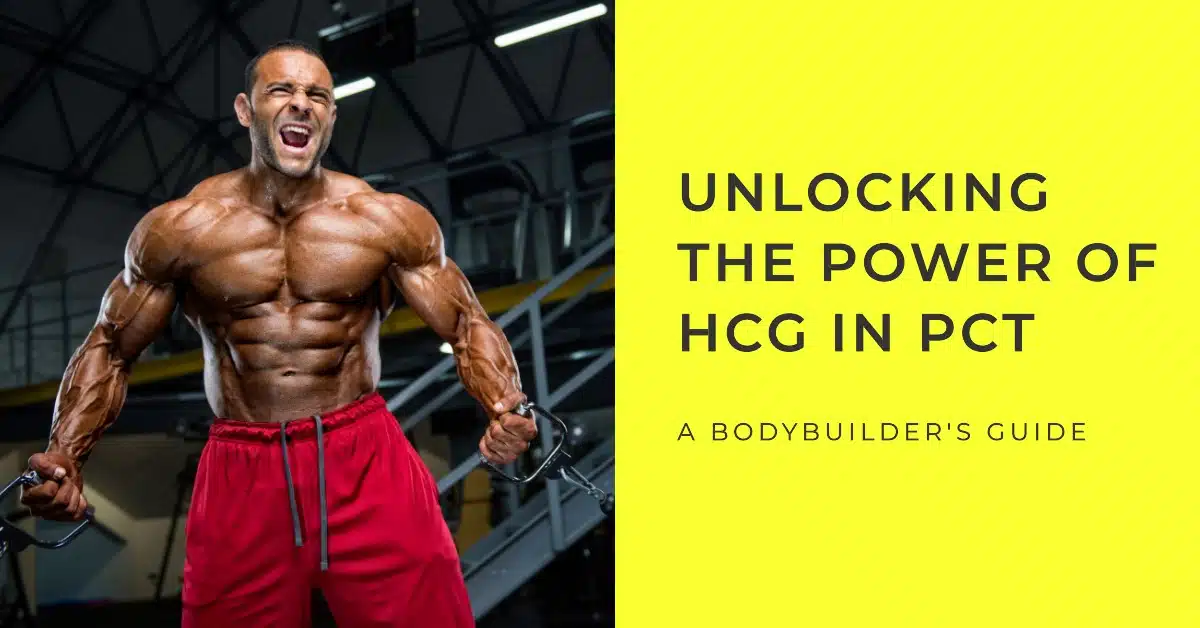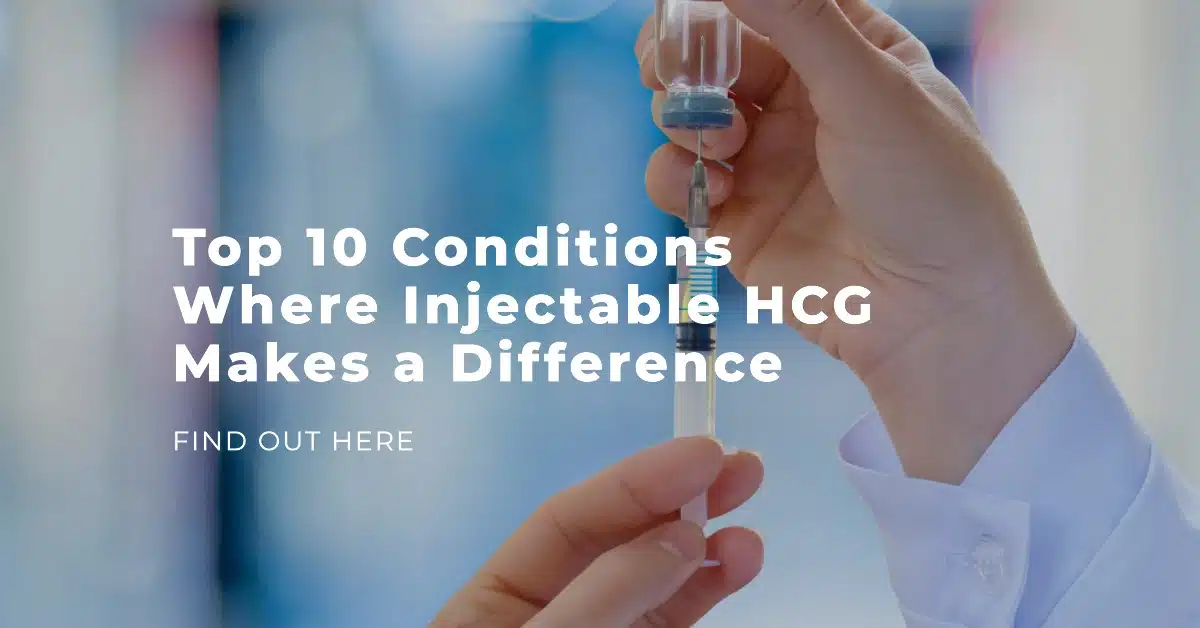The Connection Between TRT and Sperm: Get the Facts
Testosterone, the primary male sex hormone, plays a crucial role in maintaining overall health and well-being in men. As men age or experience certain health conditions, their testosterone levels may decline, leading to a range of symptoms that can significantly impact quality of life. In recent years, testosterone replacement therapy (TRT) has gained popularity as a treatment option for men with low testosterone levels. However, a pressing concern for many is the potential impact of testosterone injections on sperm count and fertility.
Let’s dive into some fascinating facts about testosterone injections and their effects on sperm production:
- Studies have shown that testosterone therapy can lead to azoospermia (absence of sperm) in 64% to 75% of men within six months of treatment source.
- The suppression of sperm production due to testosterone therapy is often reversible, with most men returning to normal sperm production levels within 6 to 12 months after discontinuing treatment source.
- Alternative treatments like clomiphene citrate or human chorionic gonadotropin (hCG) can help manage low testosterone levels while preserving fertility source.
These facts highlight the complex relationship between testosterone injections and sperm count, emphasizing the importance of understanding the potential risks and benefits of TRT for men who may want to father children in the future.
Understanding Testosterone and Its Functions
What is Testosterone?
Testosterone is a steroid hormone primarily produced in the testicles of males and, to a lesser extent, in the ovaries of females. It belongs to a class of hormones called androgens, which are responsible for the development and maintenance of male characteristics. Testosterone plays a vital role in various bodily functions, including:
- Muscle mass and strength development
- Bone density maintenance
- Fat distribution
- Red blood cell production
- Sex drive (libido)
- Sperm production
The production of testosterone is regulated by the hypothalamic-pituitary-gonadal (HPG) axis, a complex system involving the hypothalamus, pituitary gland, and testes. This axis ensures that testosterone levels are maintained within a normal range through a feedback mechanism.
Why Do Men Seek Testosterone Therapy?
As men age, it’s natural for testosterone levels to decline gradually. However, some men may experience a more significant drop in testosterone, leading to a condition known as hypogonadism or low testosterone. This can result in various symptoms that prompt men to seek testosterone replacement therapy. Some common reasons include:
- Low libido: A decrease in sex drive can significantly impact a man’s quality of life and relationships.
- Erectile dysfunction: Low testosterone levels can contribute to difficulties in achieving or maintaining an erection.
- Fatigue and low energy: Men with low testosterone often report feeling constantly tired and lacking motivation.
- Decreased muscle mass and increased body fat: Testosterone plays a crucial role in muscle development and fat distribution.
- Mood changes: Low testosterone can lead to irritability, depression, and mood swings.
- Cognitive issues: Some men report difficulties with memory and concentration.
- Osteoporosis: Testosterone is essential for maintaining bone density, and low levels can increase the risk of osteoporosis.
- Anemia: Testosterone stimulates red blood cell production, and low levels can lead to anemia.
It’s important to note that these symptoms can also be caused by other health conditions, so a proper diagnosis by a healthcare provider is crucial before starting testosterone therapy.
Mechanism of Action of Testosterone Injections
How Testosterone Injections Work
Testosterone injections are a form of exogenous testosterone, meaning they introduce testosterone from an external source into the body. The most common types of testosterone injections include:
- Testosterone cypionate: Typically administered every 1-2 weeks
- Testosterone enanthate: Usually given every 1-2 weeks
- Testosterone undecanoate: Administered every 10-14 weeks
When injected, these testosterone esters are slowly released into the bloodstream, providing a sustained increase in testosterone levels. The injection site can be intramuscular (into the muscle) or subcutaneous (under the skin), depending on the specific formulation and healthcare provider’s recommendation.
Once in the bloodstream, the exogenous testosterone binds to androgen receptors throughout the body, mimicking the effects of naturally produced testosterone. This can lead to improvements in symptoms associated with low testosterone, such as increased muscle mass, improved bone density, enhanced libido, and better mood.

Hormonal Feedback Mechanism
While testosterone injections can effectively increase overall testosterone levels in the body, they also have a significant impact on the body’s natural testosterone production. This is due to the complex hormonal feedback mechanism known as the hypothalamic-pituitary-gonadal (HPG) axis.
Here’s how the HPG axis works under normal conditions:
- The hypothalamus produces gonadotropin-releasing hormone (GnRH).
- GnRH stimulates the pituitary gland to produce luteinizing hormone (LH) and follicle-stimulating hormone (FSH).
- LH stimulates the Leydig cells in the testes to produce testosterone.
- FSH, along with testosterone, stimulates the Sertoli cells in the testes to support sperm production.
When exogenous testosterone is introduced through injections, the body detects the increased testosterone levels and responds by reducing its own production. This occurs through the following mechanism:
- The hypothalamus detects high testosterone levels and reduces GnRH production.
- Reduced GnRH leads to decreased LH and FSH production by the pituitary gland.
- Lower LH levels result in decreased testosterone production by the testes.
- Reduced FSH and intratesticular testosterone levels lead to suppressed sperm production.
This feedback loop is the primary reason why testosterone injections can have a significant impact on sperm count and fertility.
The Impact of Testosterone Injections on Sperm Count
Research Findings on Sperm Production
Numerous studies have investigated the effects of testosterone replacement therapy (TRT) on sperm production and male fertility. The findings consistently show that exogenous testosterone can significantly suppress sperm production in most men.
A comprehensive review published in the journal “Fertility and Sterility” analyzed data from multiple studies and found that:
- Approximately 65% of men became azoospermic (no sperm in the ejaculate) within 6 months of starting TRT.
- Nearly 90% of men experienced severe oligospermia (very low sperm count) or azoospermia within a year of treatment.
- The extent of sperm suppression was dose-dependent, with higher doses of testosterone leading to more profound suppression.
These findings highlight the significant impact that testosterone injections can have on sperm count and male fertility. It’s important to note that the effects can vary from person to person, and some men may maintain some level of sperm production even while on TRT.
Testosterone Injections vs Sperm Count Over Time
This chart illustrates the relationship between testosterone injections and sperm count over time. As testosterone levels increase due to injections, sperm count tends to decrease significantly.
Sources: Data adapted from studies published in the Journal of Clinical Endocrinology & Metabolism and Fertility and Sterility. Specific values may vary between individuals.
Mechanisms of Sperm Suppression
The suppression of sperm production due to testosterone injections occurs through several interconnected mechanisms:
- Reduced Gonadotropin Production: As mentioned earlier, exogenous testosterone suppresses the production of luteinizing hormone (LH) and follicle-stimulating hormone (FSH) by the pituitary gland. Both of these hormones are crucial for sperm production.
- Decreased Intratesticular Testosterone: While TRT increases overall testosterone levels in the body, it paradoxically leads to a decrease in testosterone levels within the testes. This intratesticular testosterone is essential for spermatogenesis (sperm production).
- Impaired Sertoli Cell Function: Sertoli cells in the testes provide support and nourishment to developing sperm cells. The suppression of FSH and reduced intratesticular testosterone can impair Sertoli cell function, further compromising sperm production.
- Disrupted Spermatogenesis: The combination of reduced gonadotropins and decreased intratesticular testosterone disrupts the entire process of spermatogenesis, from the early stages of sperm cell development to the final maturation of sperm.
- Altered Testicular Microenvironment: Testosterone injections can lead to changes in the testicular microenvironment, including alterations in blood flow and local hormone concentrations, which can negatively impact sperm production.
Understanding these mechanisms helps explain why testosterone injections can have such a profound effect on sperm count and male fertility.
Recovery of Sperm Production After Discontinuation
Reversibility of Testosterone-Induced Sperm Suppression
One of the most crucial questions for men considering testosterone replacement therapy (TRT) is whether the effects on sperm production are reversible. Fortunately, research suggests that in most cases, sperm production can recover after discontinuing testosterone injections.
A study published in the “Journal of Clinical Endocrinology & Metabolism” found that:
- Approximately 67% of men recovered normal sperm production within 6 months of discontinuing TRT.
- By 12 months, about 90% of men had recovered normal sperm production.
- Some men took up to 24 months to fully recover their sperm production.
These findings provide reassurance that the suppressive effects of testosterone injections on sperm count are generally reversible. However, it’s important to note that the recovery time can vary significantly from person to person.
Factors Influencing Recovery Time
Several factors can influence how quickly and completely sperm production recovers after discontinuing testosterone injections:
- Duration of TRT: Men who have been on testosterone therapy for longer periods may take more time to recover their sperm production.
- Age: Younger men tend to recover more quickly than older men.
- Pre-existing Fertility Issues: Men who had fertility problems before starting TRT may have a harder time recovering their sperm production.
- Type and Dosage of Testosterone Used: Different formulations and doses of testosterone can have varying effects on recovery time.
- Individual Physiology: Each person’s body responds differently to hormonal changes, which can affect recovery time.
- Use of Adjunct Therapies: Some men may use additional treatments, such as human chorionic gonadotropin (hCG), to help stimulate sperm production during or after TRT.
Given these factors, it’s crucial for men to discuss their fertility goals with a healthcare provider before starting testosterone therapy and to consider regular monitoring of sperm production if fertility is a concern.
Sperm Recovery After Stopping Testosterone Therapy
This chart shows the percentage of men who recover normal sperm production after discontinuing testosterone therapy.
Source: Data adapted from Liu PY, et al. “Recovery of reproductive function in men after discontinuing exogenous testosterone treatment.” Journal of Clinical Endocrinology & Metabolism, 2006.
Clinical Implications for Men Considering TRT
Importance of Pre-treatment Sperm Analysis
For men considering testosterone replacement therapy (TRT), especially those who may want to father children in the future, it’s crucial to undergo a comprehensive evaluation before starting treatment. This evaluation should include:
- Semen Analysis: This test provides information about sperm count, motility, and morphology, establishing a baseline for future comparisons.
- Hormone Panel: Measuring levels of testosterone, LH, FSH, and other relevant hormones can help identify the underlying cause of low testosterone.
- Physical Examination: A thorough exam can help rule out other potential causes of symptoms or fertility issues.
- Medical History Review: Understanding a patient’s full medical history, including any previous fertility issues or treatments, is essential.
By conducting these assessments before initiating TRT, healthcare providers can better advise patients on the potential risks and benefits of treatment, particularly concerning fertility.
Counseling on Fertility Preservation Options
For men who are concerned about maintaining their fertility while undergoing TRT, several options are available:
- Sperm Banking: Men can choose to freeze and store their sperm before starting testosterone therapy. This provides a backup option for future fertility treatments if natural conception becomes difficult.
- Alternative Treatments: Some men may benefit from treatments that can improve testosterone levels without significantly suppressing sperm production, such as:
- Clomiphene citrate: This medication stimulates the body’s own testosterone production.
- Human chorionic gonadotropin (hCG): HCG can stimulate testosterone production while maintaining sperm production.
- Intermittent Therapy: Some healthcare providers may recommend cycling on and off testosterone therapy to allow periods of sperm recovery.
- Combination Therapies: Using testosterone in combination with medications like hCG or FSH may help maintain fertility in some cases.
- Regular Monitoring: For men on TRT who wish to preserve fertility, regular semen analyses can help track any changes in sperm production.
It’s essential for healthcare providers to have thorough discussions with patients about these options, considering each individual’s unique circumstances, health status, and fertility goals.
Alternatives to Traditional Testosterone Therapy
Medications That Preserve Fertility
For men who need to address low testosterone symptoms but wish to maintain their fertility, several alternative medications can be considered:
- Clomiphene Citrate: This selective estrogen receptor modulator (SERM) works by stimulating the body’s own production of testosterone. It does this by blocking estrogen receptors in the hypothalamus and pituitary gland, leading to increased production of LH and FSH. This, in turn, stimulates the testes to produce more testosterone and sperm.
- Benefits: Can increase testosterone levels while maintaining or even improving sperm production.
- Considerations: May not be as effective as direct testosterone replacement for some symptoms.
- Human Chorionic Gonadotropin (hCG): This hormone mimics LH in the body, stimulating the Leydig cells in the testes to produce testosterone. It can be used alone or in combination with other treatments.
- Benefits: Increases testosterone production while maintaining testicular function and sperm production.
- Considerations: Requires regular injections, typically 2-3 times per week.
- Anastrozole: This aromatase inhibitor works by preventing the conversion of testosterone to estrogen, which can help increase testosterone levels in some men.
- Benefits: Can be effective in men with low testosterone and high estrogen levels.
- Considerations: May not be suitable for all men and requires careful monitoring.
- Enclomiphene: Similar to clomiphene citrate but more selective in its action, enclomiphene can stimulate testosterone production while potentially having fewer side effects.
- Benefits: May have a more favorable side effect profile compared to clomiphene.
- Considerations: Not as widely available or studied as other options.
These alternatives can be effective in managing low testosterone symptoms while preserving fertility. However, their suitability depends on the individual’s specific situation, and they should only be used under the guidance of a healthcare provider.
Lifestyle Changes and Natural Approaches
In addition to medical treatments, several lifestyle modifications and natural approaches can help boost testosterone levels and improve overall health:
- Exercise: Regular physical activity, particularly resistance training and high-intensity interval training (HIIT), can naturally increase testosterone levels.
- Nutrition: A balanced diet rich in protein, healthy fats, and micronutrients can support hormone production. Some specific nutrients that may be beneficial include:
- Zinc
- Vitamin D
- Omega-3 fatty acids
- Magnesium
- Sleep Optimization: Poor sleep can negatively impact testosterone levels. Aim for 7-9 hours of quality sleep per night.
- Stress Management: Chronic stress can lower testosterone levels. Techniques such as meditation, yoga, or regular relaxation practices can help manage stress.
- Weight Management: Maintaining a healthy body weight is crucial, as obesity is associated with lower testosterone levels.
- Limit Alcohol Consumption: Excessive alcohol intake can negatively affect testosterone production and overall health.
- Avoid Endocrine Disruptors: Minimize exposure to environmental toxins that can interfere with hormone production, such as certain plastics and pesticides.
- Herbal Supplements: Some herbs, such as ashwagandha and fenugreek, have shown promise in supporting testosterone levels, though more research is needed.
While these lifestyle changes and natural approaches may not be as potent as medical treatments, they can contribute to overall health and well-being, potentially improving testosterone levels and fertility. It’s important to note that these approaches should be used in conjunction with, not as a replacement for, medical advice and treatment when necessary.
Conclusion
Testosterone injections, while effective in treating symptoms of low testosterone, can significantly impact sperm count and male fertility. The suppression of sperm production is a well-documented side effect of testosterone replacement therapy (TRT), with studies showing that a majority of men experience severe oligospermia or azoospermia within months of starting treatment.
However, it’s crucial to remember that this effect is generally reversible. Most men recover their sperm production within 6-12 months of discontinuing TRT, although some may take longer. The recovery time can be influenced by factors such as the duration of treatment, age, and individual physiology.
For men considering TRT who may want to father children in the future, it’s essential to have thorough discussions with healthcare providers about the potential risks and benefits. Pre-treatment evaluations, including sperm analysis, can provide valuable baseline information. Fertility preservation options, such as sperm banking, should be considered before starting therapy.
Alternatives to traditional testosterone
Alternatives to traditional testosterone replacement therapy offer promising options for men who need to address low testosterone symptoms while maintaining their fertility. These alternatives, along with lifestyle modifications, can provide a more balanced approach to managing testosterone levels without compromising sperm production.
Men and their healthcare providers should carefully weigh the benefits and risks of each approach, considering individual health status, fertility goals, and lifestyle factors. It’s important to remember that what works best for one person may not be ideal for another, emphasizing the need for personalized treatment plans.
As research in this field continues to evolve, new treatments and approaches may emerge, offering even more options for men seeking to balance their hormonal health with their fertility goals. Staying informed and maintaining open communication with healthcare providers is key to navigating these complex decisions.
Ultimately, the goal is to find a solution that improves quality of life while preserving future reproductive options. With careful consideration and proper medical guidance, many men can successfully manage their testosterone levels without sacrificing their fertility potential.
FAQ
Can I get pregnant if my husband is taking testosterone shots?
While it’s not impossible, pregnancy can be significantly more difficult if your husband is taking testosterone shots. Testosterone injections often suppress sperm production, reducing fertility. If pregnancy is desired, it’s crucial to consult a healthcare provider about alternative treatments or temporarily stopping testosterone therapy.
How fast does testosterone kill sperm?
Testosterone can begin affecting sperm production within weeks of starting therapy. Studies show that significant suppression of sperm production occurs in most men within 3-6 months of starting testosterone replacement therapy.
Does testosterone affect fertility?
Yes, testosterone replacement therapy can significantly affect fertility. It suppresses the body’s natural production of testosterone and sperm, often leading to reduced sperm count or even absence of sperm in the ejaculate.
Does testosterone kill your sperm?
While testosterone doesn’t directly “kill” sperm, it does suppress sperm production. This can result in very low sperm counts or no sperm in the ejaculate, effectively impairing fertility.
How long does it take for sperm to come back after TRT?
Recovery of sperm production after stopping testosterone replacement therapy varies. Most men see a return to normal sperm production within 6-12 months, but it can take up to 2 years for some individuals.
Does testosterone injections kill sperm count?
Testosterone injections typically reduce sperm count significantly. While they don’t “kill” sperm directly, they suppress the body’s natural sperm production process, often resulting in very low sperm counts or azoospermia (no sperm in the ejaculate).
My experience and knowledge in the fitness and wellness industry have led me to specialize in providing practical and insightful content to help individuals achieve their health goals. Beyond my professional life, I have a deep-rooted passion for nature and fitness, which I express through my love for pickleball and hiking.











